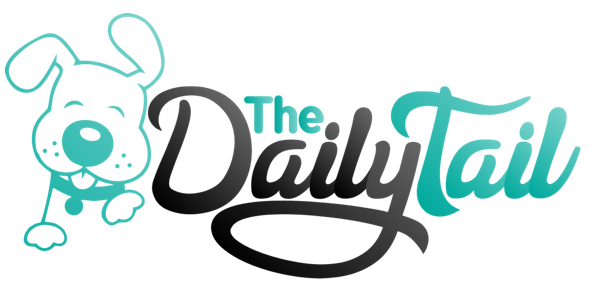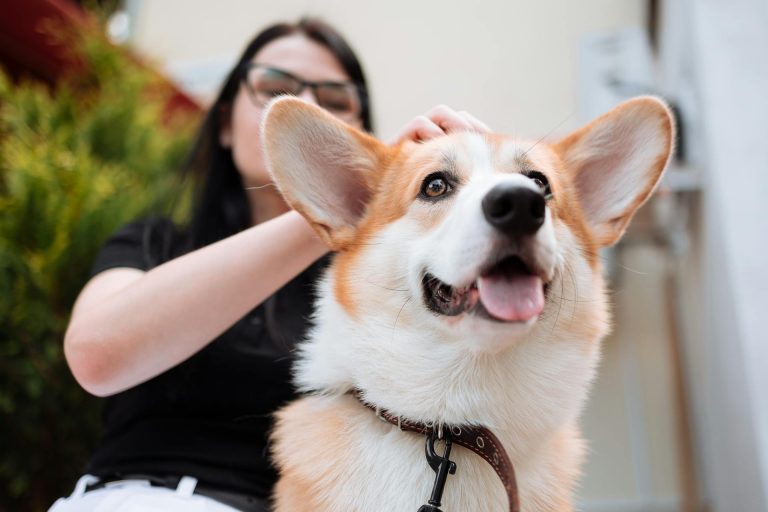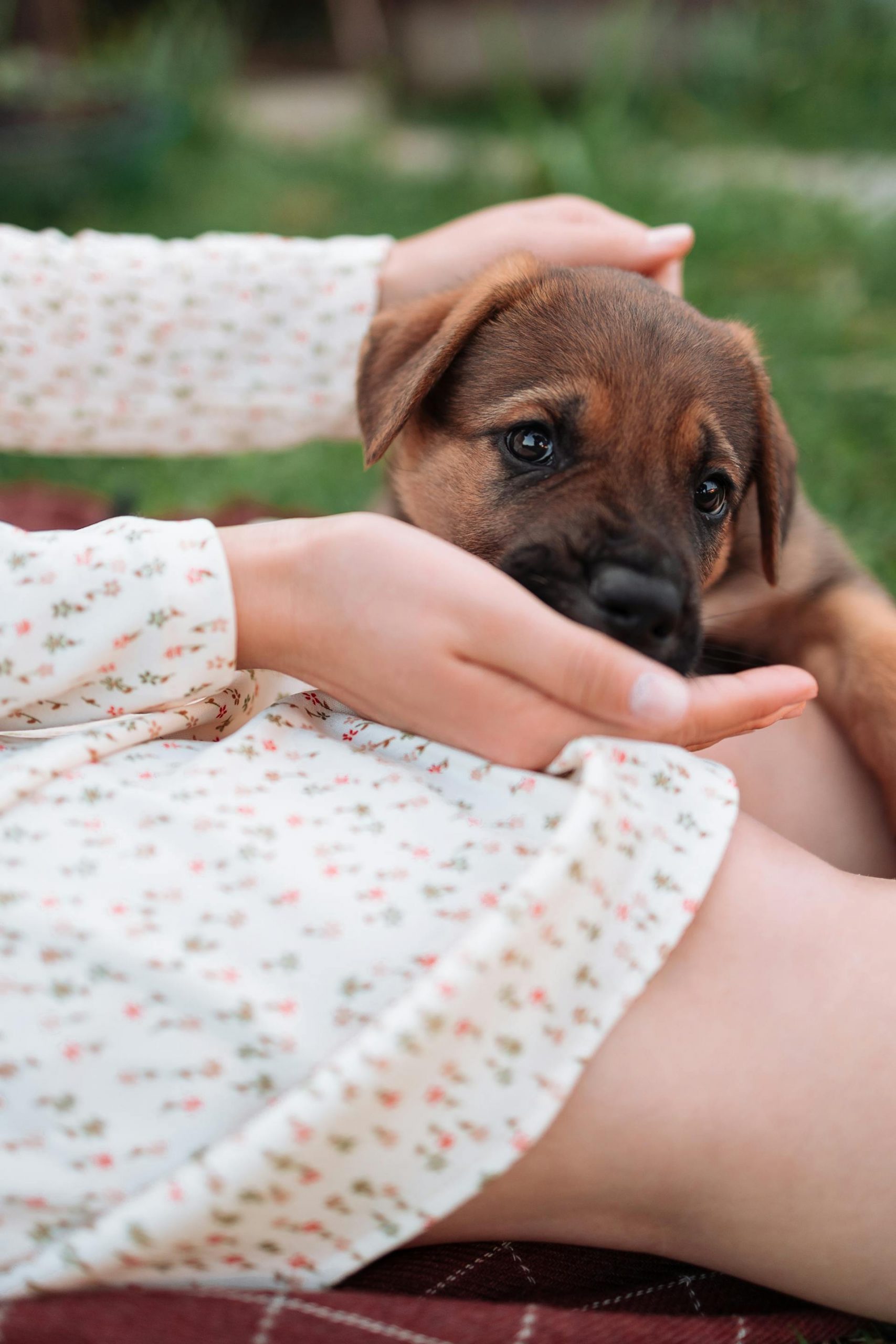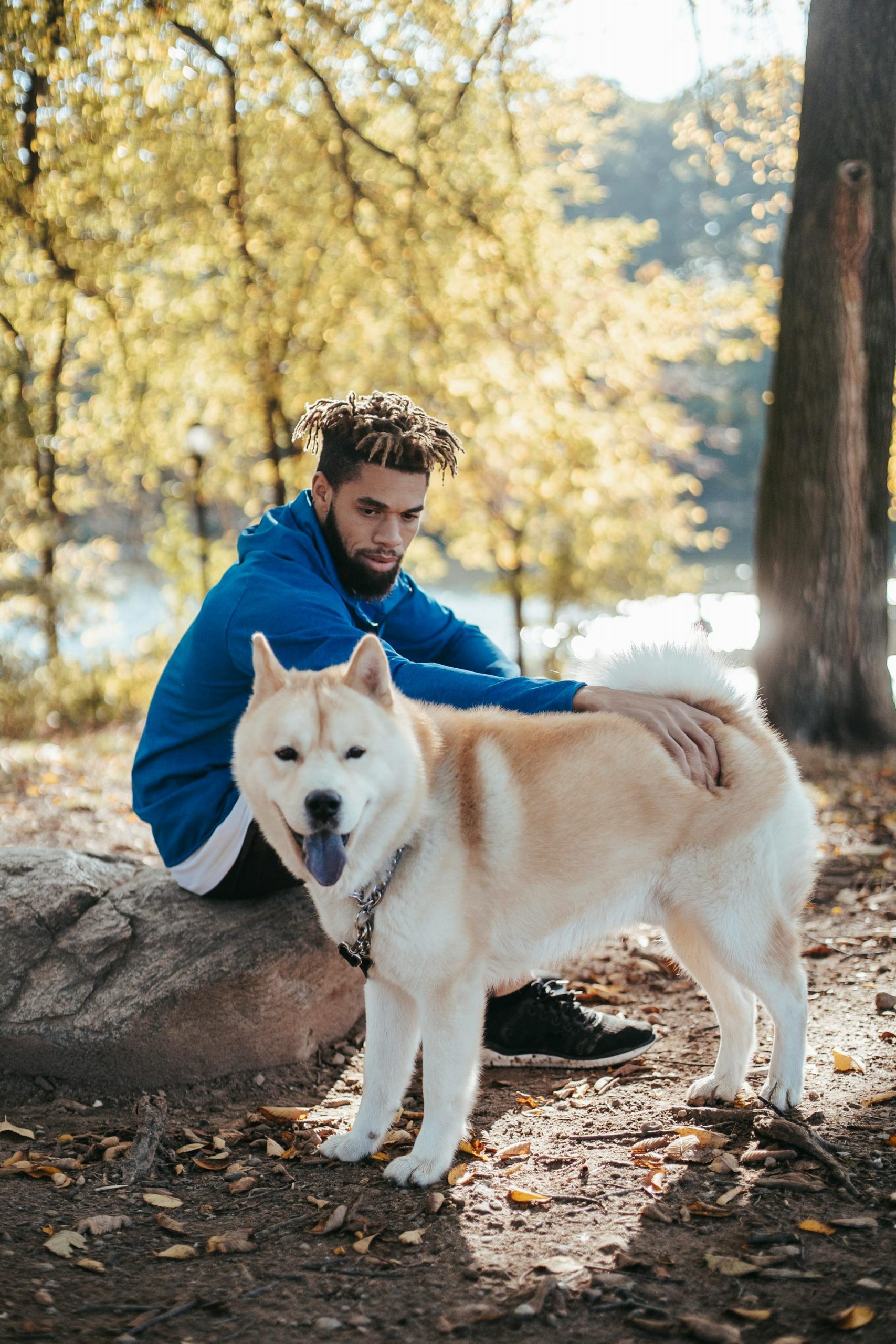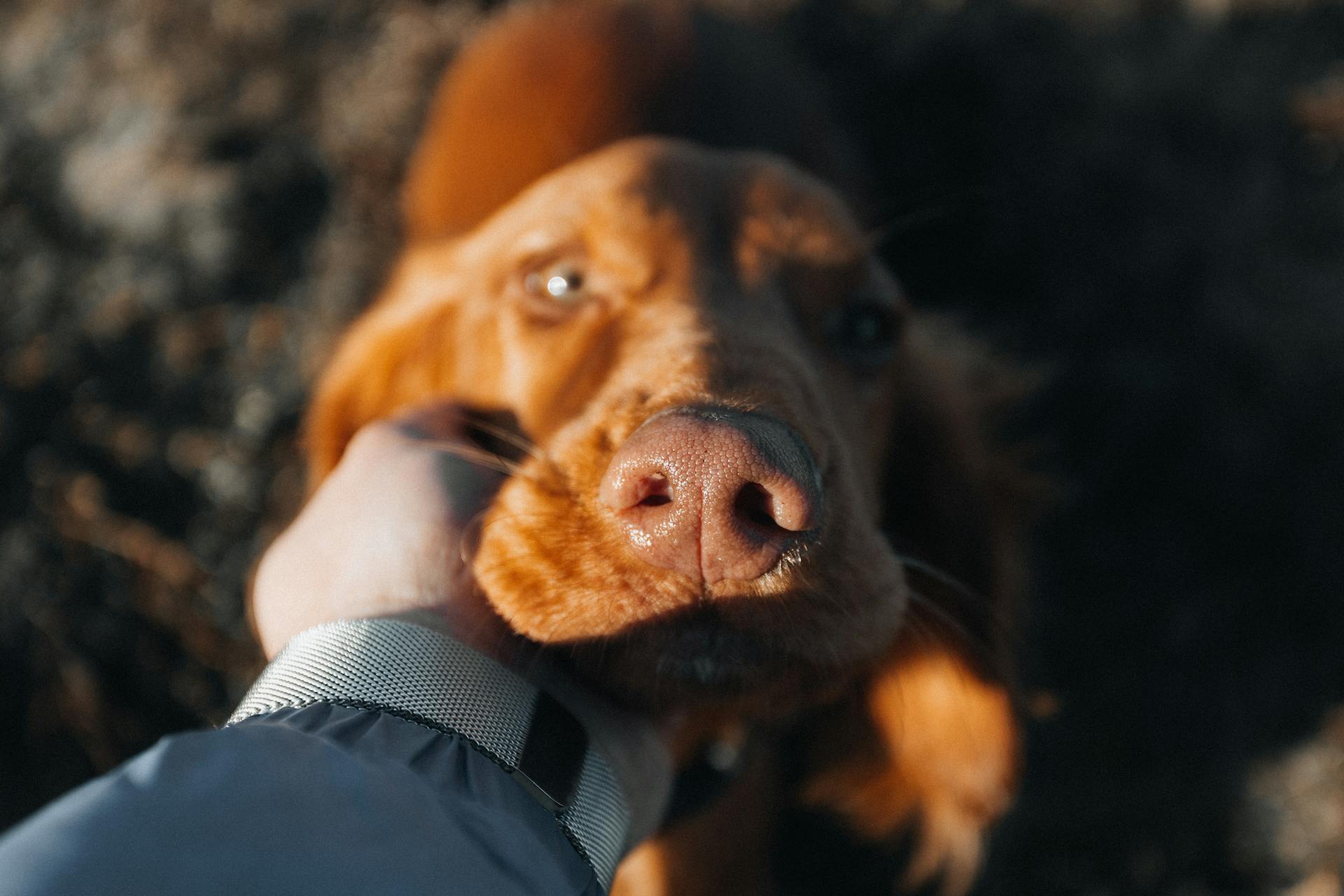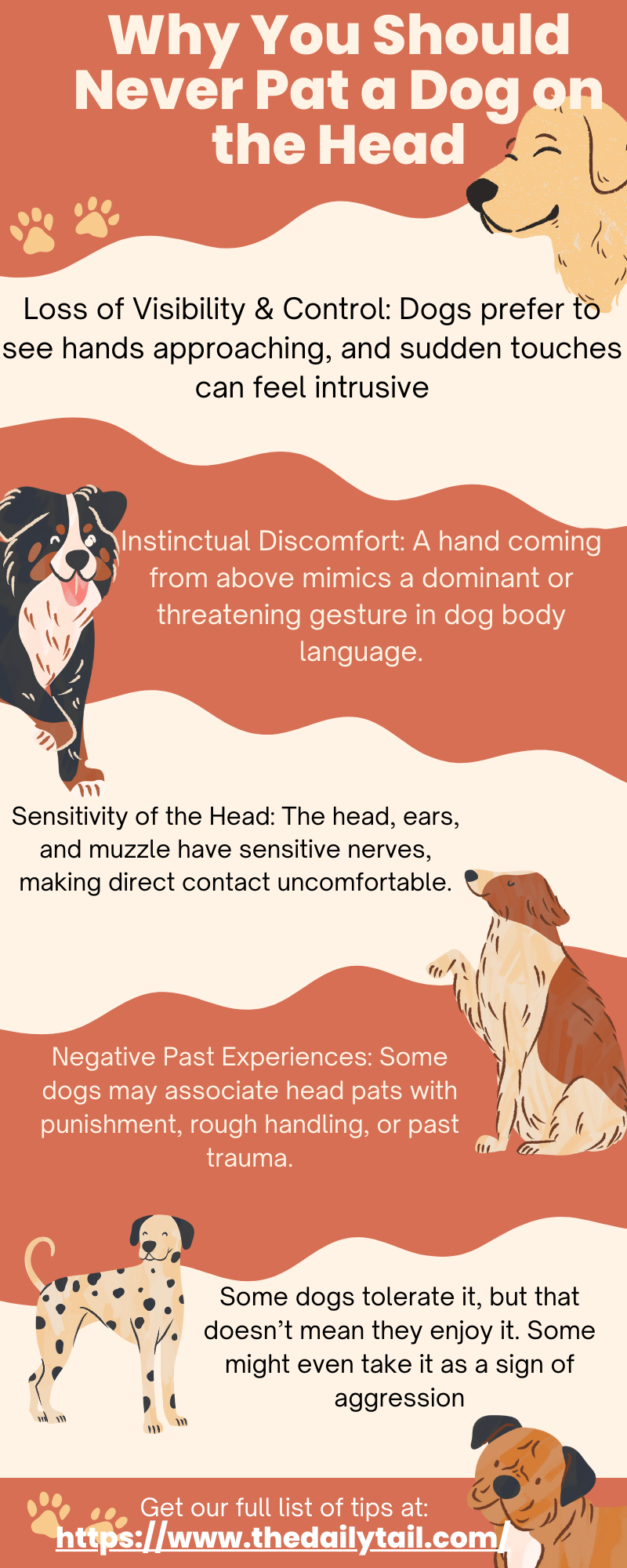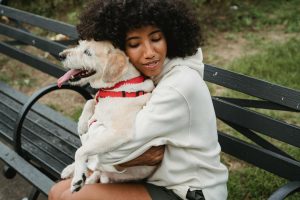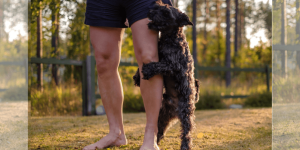We’ve all done it before. If you love dogs, you’ve probably patted one on the head at some point. It feels natural, right? You see a cute pup, reach out, and give them a friendly pat. The problem? Most dogs don’t like it.
I know—it’s shocking. People mean well when they do it. But from a dog’s point of view, a hand coming down from above isn’t a sign of affection. It’s more like, “Hey, what are you doing? Back off.” Some dogs tolerate it, but that doesn’t mean they enjoy it. Some might even take it as a sign of aggression. So, to prevent any incidents in the future, I want t talk about why head pats aren’t the best way to greet or bond with a dog and what you should do instead.
Why People Pat Dogs on the Head
We do it because it’s what we’re used to. When we like someone, we reach out and touch them—maybe a pat on the shoulder or a ruffle of their hair. It’s the same idea with dogs. But dogs don’t think like people.
Many of us also grew up seeing dogs in movies and TV shows getting head pats. It looks normal. It looks like something a “good boy” should enjoy. So, we assume dogs love it. But just because a dog sits there and accepts it doesn’t mean they’re happy about it.
Why Dogs Hate Head Pats
It Feels Like a Threat
Imagine someone much bigger than you suddenly reaching down and tapping your head. You might flinch. Dogs feel the same way. A hand coming from above can be intimidating, especially for nervous or shy dogs. In dog language, this kind of movement is more dominant than friendly.
It Takes Away Their Sense of Control
Dogs like to see what’s coming. When a hand reaches toward their face from above, they lose sight of it for a moment. This can make them uneasy. A lot of dogs will instinctively duck their heads, pull away, or even close their eyes.
Sensitive Heads
A dog’s head is packed with nerve endings. The area around their ears, forehead, and muzzle can be especially sensitive. While some dogs enjoy a gentle scratch in these spots, a flat-out pat on the head can feel jarring.
It Might Bring Up Bad Memories
Rescue dogs or those with a rough past may associate head pats with punishment. Even if you mean well, an unexpected touch can bring back bad experiences. If a dog has ever been hit, grabbed, or handled roughly, they might react with fear or even snap.
How to Tell If a Dog Dislikes Head Pats
Some dogs make it obvious—they duck, move away, or even give a warning growl. Others show smaller signs of discomfort, like:
- Whale eye (when you can see the whites of their eyes)
- Pinned-back ears
- Licking their lips
- Yawning (a stress signal, not a sign of sleepiness)
- Tensing up or freezing
If a dog stiffens when you reach for them, take the hint. Just because they don’t bite or bark doesn’t mean they’re comfortable.
Better Ways to Show a Dog Affection
So, if head pats are off the table, what’s a better way to interact with a dog? Here’s what most dogs actually like:
Pet Under the Chin or on the Chest
Instead of going for the top of the head, try scratching under the chin or rubbing the chest. This approach feels less intrusive and allows the dog to see your hand the whole time.
Scratch Their Back or Side
Many dogs love a good back scratch, especially around the base of the tail. Scratching the side of their neck or shoulders is also a safer and more comfortable option
Let the Dog Make the First Move
Some dogs enjoy physical affection, while others don’t. Instead of assuming, let the dog decide. If they lean into you, nuzzle your hand, or wag their tail in a relaxed way, that’s a green light for more interaction.
Use Verbal Praise
Dogs respond well to a happy voice. Saying “good boy” or “good girl” in a warm tone can be just as meaningful as physical touch.
When Head Pats Can Be Risky
There are situations where a head pat isn’t just annoying—it’s flat-out dangerous.
- With an Unfamiliar Dog – Never assume a strange dog is okay with being touched, especially on the head. Always ask the owner first and let the dog approach you.
- With a Nervous or Rescue Dog – Some dogs have trust issues. A sudden head pat can make them anxious or defensive.
- With Small Children – Kids tend to reach straight for a dog’s head. If the dog isn’t comfortable, this could lead to a bite. Teaching kids to pet dogs the right way can prevent accidents.
- During High-Energy Moments – If a dog is overly excited, stressed, or overwhelmed, a head pat can push them over the edge.
Final Thoughts
Most people pat dogs on the head because they don’t know any better. It’s a habit, and habits are hard to break. But once you start noticing how dogs react, you’ll see why it’s not the best way to greet or bond with them.
Dogs communicate a lot through body language, and respecting their signals builds trust. Next time you meet a dog, skip the head pat and try a chin scratch or a back rub instead. They’ll appreciate it—and you might just make a new four-legged friend.
